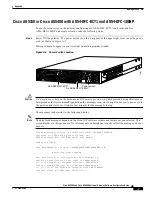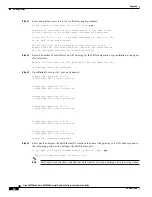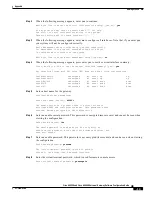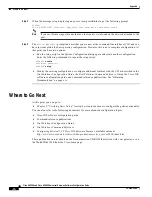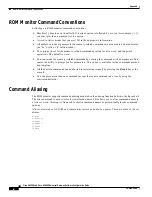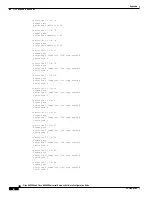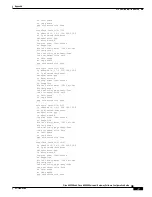
-2
Cisco AS5350 and Cisco AS5400 Universal Gateway Software Configuration Guide
OL-3418-02 B0
Appendix
ROM Monitor Command Conventions
ROM Monitor Command Conventions
Following are ROM monitor command conventions:
•
Brackets [ ] denote an optional field. If a minus option is followed by a colon (for example: [-s:]),
you must provide an argument for the option.
•
A word in italics means that you must fill in the appropriate information.
•
All address and size arguments to the memory-related commands are assumed to be hexadecimal
(no “0x” prefix or ‘h’ suffix needed).
•
The options [-bwl] for the memory-related commands provide for byte, word, and longword
operations. The default is word.
•
You can invoke the memory-related commands by entering the command with no arguments. This
causes the utility to prompt you for parameters. This option is available for the commands marked
as prompting.
•
All the built-in commands can be aborted (user interrupt signal) by pressing the Break key at the
console.
•
You can place more than one command (except the repeat command) on a line by using the
semicolon delimiter.
Command Aliasing
The ROM monitor supports command aliasing modeled on the aliasing function built into the Korn shell.
The alias command is used to set and view aliased names. This allows you to alias command names to
a letter or word. Aliasing is often used to shorten command names or automatically invoke command
options.
Aliases are stored in NVRAM and remain intact across periods of no power. These are some of the set
aliases:
b=boot
h=history
i=reset
r=repeat
k=stack
?=help




